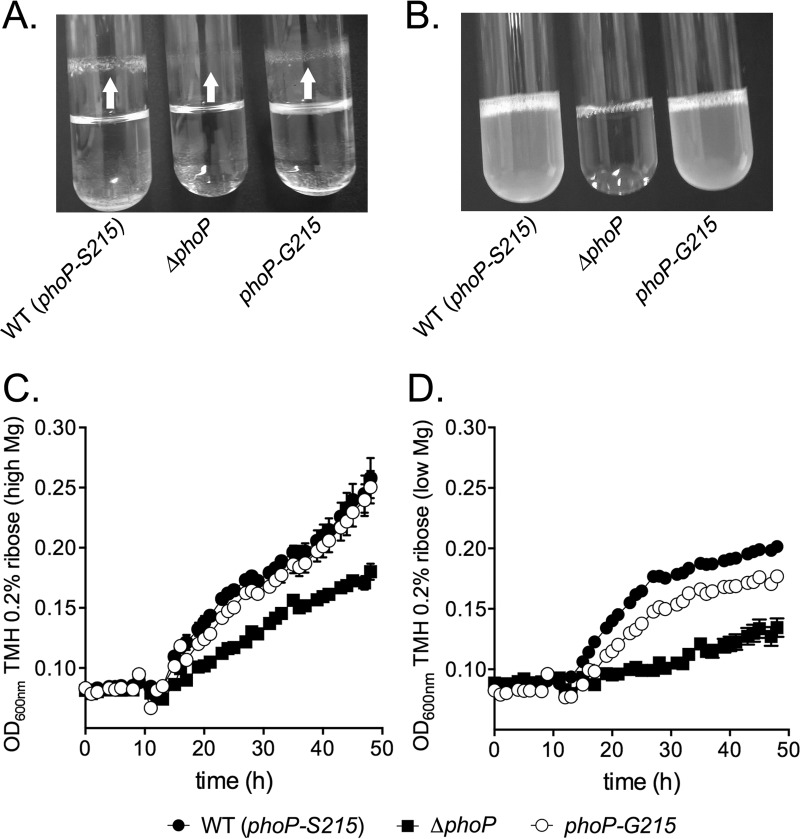FIG 2.
Growth characteristics of Y. pestis strains. (A and B) Y. pestis KIM6+ (wild type [WT]) or the indicated KIM6+-derived strains were cultured overnight in TMH medium containing 20 μM Mg2+ (phoP-activating low-Mg2+ condition) in glass tubes at 21°C (A) or 37°C (B), and their gross growth phenotypes were compared. The arrows indicate the biofilms formed on the surfaces of the glass tubes. The biofilms appear to have formed above the liquid-air interface, because the liquid was reaching higher levels in the tubes during incubation in a rotary shaker. The pictures are representatives of three independent experiments. (C and D) Growth curve analysis was performed at ambient room temperature (∼23°C) using TMH supplemented with 0.2% ribose as the carbon source. The indicated Y. pestis KIM6+-derived strains were cultured successively over two nights, first in brain heart infusion medium and then in TMH ribose containing 20 mM Mg2+. On day three, the strains were diluted to 1:1,000 in TMH ribose with 20 mM Mg2+ (high Mg2+) (C) or TMH ribose with 10 μM Mg2+ (low Mg2+) (D) and growth was recorded on a Bioscreen C (Growth Curves, USA) for 48 h. Data represent the average from three biological replicates.

